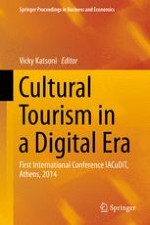2015 | OriginalPaper | Chapter
Russian Artistic Gymnastics as a Sports Tourism Product: Some Observations and a Research Agenda
Authors : Elizabeth Booth, Jithendran Kokkranikal, Olga Burukina
Published in: Cultural Tourism in a Digital Era
Publisher: Springer International Publishing
Activate our intelligent search to find suitable subject content or patents.
Select sections of text to find matching patents with Artificial Intelligence. powered by
Select sections of text to find additional relevant content using AI-assisted search. powered by
Abstract
-
The nature of gymnastics fandom, both in Russia and internationally
-
The nature of sports tourism development in the Russian Federation
-
The nature of gymnastics as a sport and its competition cycle
-
Artistic gymnastics as cultural heritage, and its potential as an autonomous means of promoting Russian national identity
-
The relationship between Russia’s sometimes fading gymnastics competition results, and its potential to leverage the sport for tourism interest
-
The potential for tourism product development linked to artistic gymnastics in the Russian Federation.
